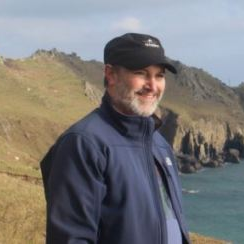Coastal Hazards Assessment in Cold Regions
A special issue of Journal of Marine Science and Engineering (ISSN 2077-1312). This special issue belongs to the section "Coastal Engineering".
Deadline for manuscript submissions: closed (10 September 2021) | Viewed by 9167
Special Issue Editors
Interests: coastal geoscience; coastal risks; erosion processes; vulnerability; climate changes; remote sensing; sea-level; ice foot dynamics
Interests: natural hazards; risk mapping; early warning systems; coastal geomorphology; wave runup; coastal flooding; remote sensing; video monitoring; sea ice
Special Issue Information
Dear Colleagues,
Studies on coastal hazards and risks around the world are generally focused on systems not affected by sea ice or other cryogenic processes. Under a changing climate where temperate to high-latitude seas suffer from sea ice and ice foot shrinking, protection against wave energy is weakened and higher risk can be expected during storms. In cold regions, the effects of coastal permafrost thawing, frost processes, storm surge, sea level rise, tsunamis, sea ice, and ice foot needs to be considered in coastal hazards assessments for effective risk reduction and adaptation strategies. In this Special Issue entitled “Coastal Hazards Assessment in Cold Regions” we invite authors to submit papers that address all hazards on coasts seasonally affected by sea ice dynamics, frost action, and other processes in the cryosphere. We also welcome papers focused on risk assessment for coastal communities and infrastructures, as well as adaptation strategies to reduce their vulnerability to coastal hazards in cold regions.
Prof. Dr. Pascal Bernatchez
Dr. David Didier
Guest Editors
Manuscript Submission Information
Manuscripts should be submitted online at www.mdpi.com by registering and logging in to this website. Once you are registered, click here to go to the submission form. Manuscripts can be submitted until the deadline. All submissions that pass pre-check are peer-reviewed. Accepted papers will be published continuously in the journal (as soon as accepted) and will be listed together on the special issue website. Research articles, review articles as well as short communications are invited. For planned papers, a title and short abstract (about 100 words) can be sent to the Editorial Office for announcement on this website.
Submitted manuscripts should not have been published previously, nor be under consideration for publication elsewhere (except conference proceedings papers). All manuscripts are thoroughly refereed through a single-blind peer-review process. A guide for authors and other relevant information for submission of manuscripts is available on the Instructions for Authors page. Journal of Marine Science and Engineering is an international peer-reviewed open access monthly journal published by MDPI.
Please visit the Instructions for Authors page before submitting a manuscript. The Article Processing Charge (APC) for publication in this open access journal is 2600 CHF (Swiss Francs). Submitted papers should be well formatted and use good English. Authors may use MDPI's English editing service prior to publication or during author revisions.
Keywords
- vulnerability and risk
- climate change
- sea ice and ice foot
- frost processes
- storm surge
- waves
- cryosphere
- tsunamis
- flood and erosion
- permafrost
- mapping
- mitigation
- adaptation






